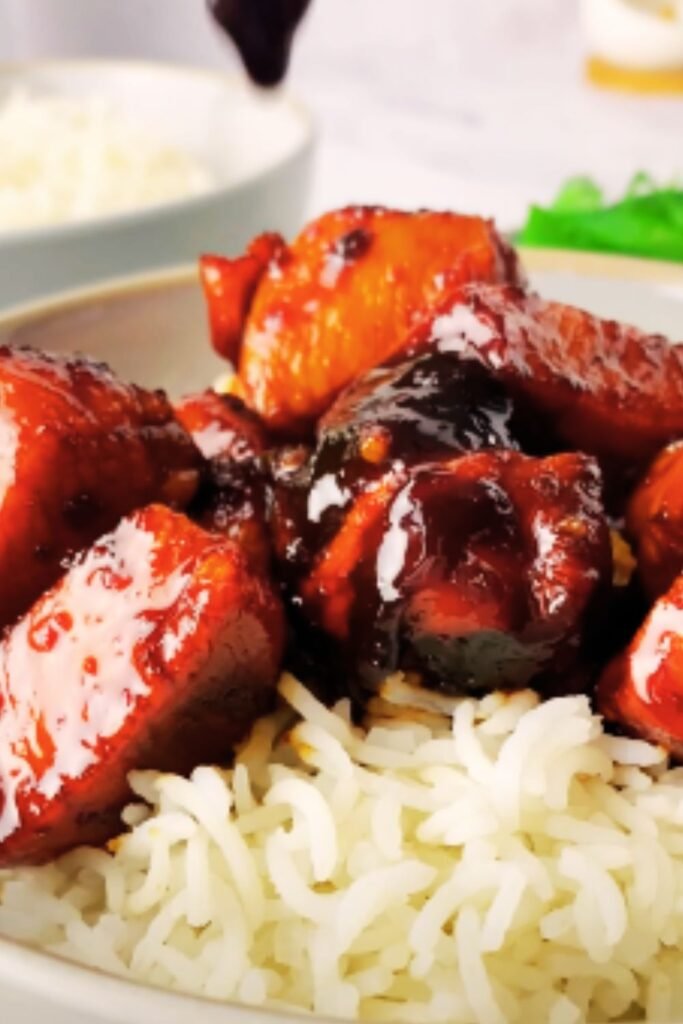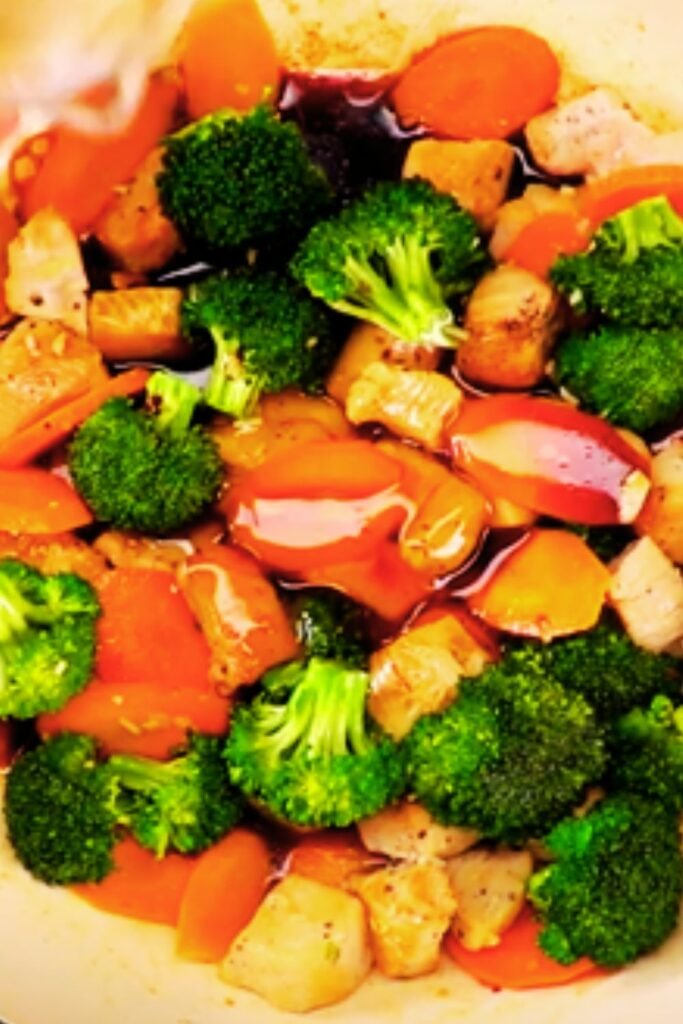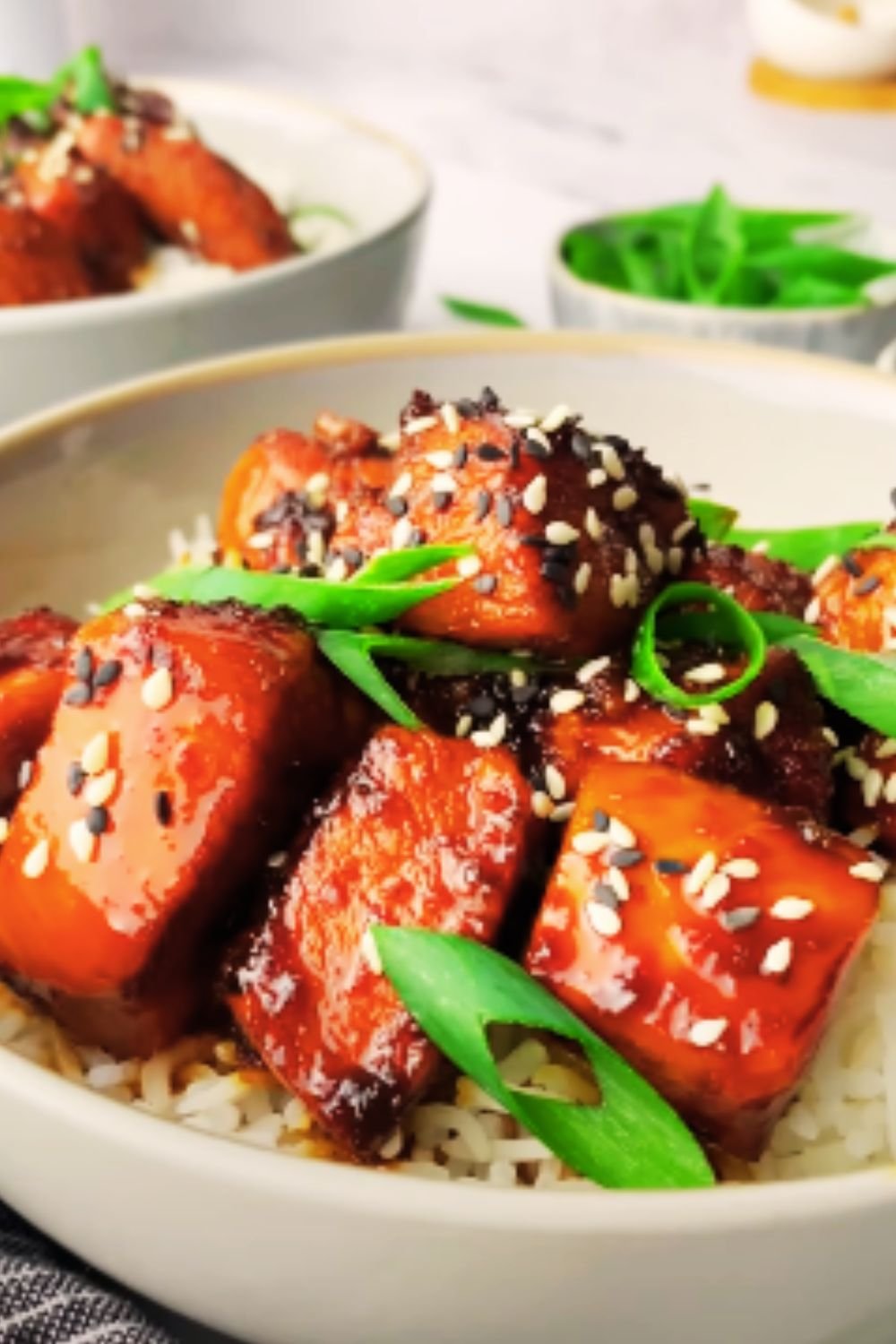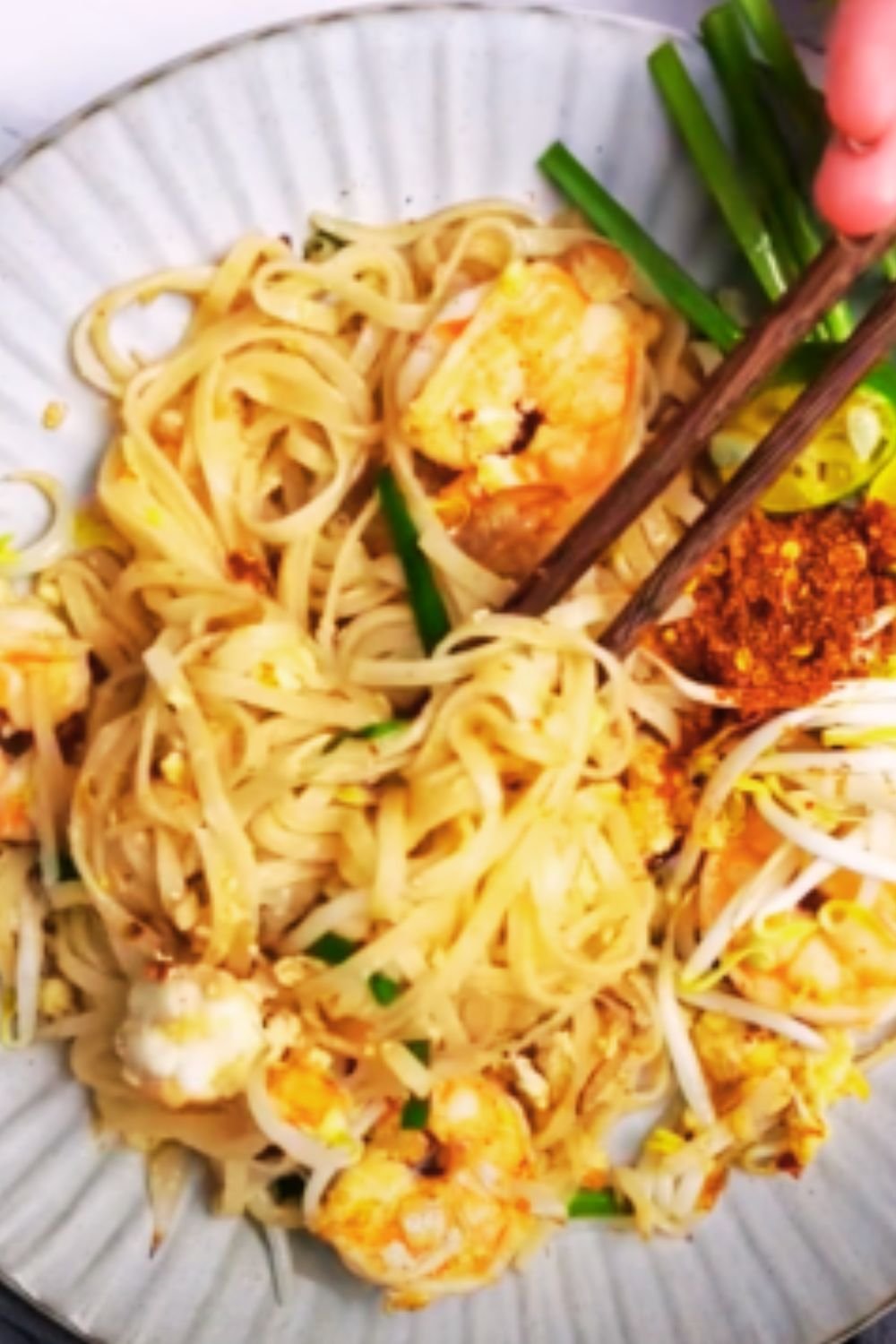There’s something magical about that sizzling sound when ingredients hit a hot wok. I’ve been perfecting my honey garlic chicken stir fry recipe for years, and I’m excited to share it with you today. This dish has saved countless weeknight dinners at my house – it’s quick, packed with flavor, and healthier than takeout.
When life gets hectic, this recipe becomes my secret weapon. Ready in under 30 minutes, it transforms simple ingredients into something extraordinary. The sauce – oh, that sauce! It’s a perfect balance of sweet honey, pungent garlic, and savory soy that coats every bite with mouthwatering flavor.
But this dish isn’t just delicious – it’s also incredibly versatile. I’ll show you how to customize it with whatever vegetables you have on hand, making it perfect for cleaning out the fridge before your next grocery run. Plus, the leftovers (if there are any!) make an amazing lunch the next day.
Let me walk you through creating this family favorite step by step, sharing all my tips and tricks for stir fry success along the way.
Why This Recipe Works
Before diving into the ingredients and instructions, I want to share why this particular honey garlic chicken stir fry recipe stands above the rest:
- Balanced Flavors: The sauce achieves that perfect harmony between sweet, savory, and umami notes without being overwhelmingly sweet like some restaurant versions.
- Properly Cooked Chicken: My technique ensures tender, juicy chicken pieces that remain moist throughout cooking.
- Crisp-Tender Vegetables: The vegetables retain their vibrant colors, nutrients, and pleasing texture.
- Customizable: The basic formula works with endless variations of proteins and vegetables.
- Weeknight Friendly: From start to finish in under 30 minutes with minimal cleanup.
I’ve learned these principles through countless stir fry experiments, and they truly make the difference between a good stir fry and a great one.
Essential Ingredients
Let’s start with what you’ll need to make this dish shine:
For the Chicken Marinade:
- 1½ pounds boneless, skinless chicken breasts, cut into 1-inch pieces
- 1 tablespoon cornstarch
- 1 tablespoon low-sodium soy sauce
- ½ teaspoon white pepper (or black pepper)
For the Honey Garlic Sauce:
- ⅓ cup honey (local if possible)
- ⅓ cup low-sodium soy sauce
- 6 cloves garlic, minced (about 2 tablespoons)
- 1 tablespoon fresh ginger, grated
- 1 tablespoon rice vinegar
- 1 tablespoon cornstarch
- 2 tablespoons water
- ½ teaspoon red pepper flakes (optional, for heat)
For the Stir Fry:
- 2 tablespoons vegetable oil, divided
- 1 medium onion, sliced
- 2 bell peppers (any color), sliced
- 2 cups broccoli florets
- 1 cup snap peas, trimmed
- 1 carrot, julienned
- 3 green onions, sliced, whites and greens separated
- 1 tablespoon sesame seeds, for garnish
The ingredients may seem numerous, but many are pantry staples that create the foundation for that irresistible flavor profile. Let’s talk about some key components:
Cornstarch: This humble ingredient serves double duty. In the marinade, it creates a protective coating around the chicken pieces (a technique called “velveting” in Chinese cooking) that keeps them tender during high-heat cooking. In the sauce, it acts as a thickener, creating that beautiful glossy consistency that clings to every bite.
Fresh Garlic and Ginger: Please don’t substitute powdered versions here! Fresh aromatics create the vibrant foundation of flavor that makes this dish special. If you’re short on time, look for pre-minced options in your produce section.
Low-Sodium Soy Sauce: This allows you to control the saltiness of the final dish. Regular soy sauce can make the dish too salty, especially once reduced.
Honey: Provides natural sweetness and helps create that gorgeous glaze. Different honey varieties will subtly change the flavor profile – I love using a local wildflower honey for its complexity.
Equipment Needed
Good stir fry requires the right tools. Here’s what you’ll need:
- Large Wok or 12-inch Skillet: A wok is traditional, but a wide skillet works well too. The key is having enough surface area for ingredients to sear rather than steam.
- Long Cooking Utensils: A wooden spoon or heat-resistant spatula keeps your hands safely away from the hot pan.
- Sharp Knife: For cleanly cutting chicken and vegetables.
- Small Bowls: For organizing pre-measured ingredients.
- Whisk: For mixing the sauce ingredients.
Preparation: The Secret to Stir Fry Success
The most important principle in stir frying is having everything prepped before you start cooking. The Chinese call this “mise en place” (everything in its place), and it’s essential because once you start cooking, the process moves quickly. Here’s my prep routine:
- Marinate the Chicken: In a medium bowl, combine chicken pieces with cornstarch, soy sauce, and white pepper. Toss until evenly coated and set aside while you prep other ingredients (at least 10 minutes, but no more than 30).
- Make the Sauce: In a small bowl, whisk together honey, soy sauce, minced garlic, grated ginger, rice vinegar, cornstarch, water, and red pepper flakes (if using). Set aside.
- Prep Vegetables: Wash, trim, and cut all vegetables as directed. Group them based on cooking time: onions and carrots cook longer, while broccoli, peppers, and snap peas need less time.
- Organize Workspace: Arrange your prepped ingredients near the stove in the order you’ll add them.
This preparation may take 15 minutes, but the actual cooking will only take about 10 minutes once everything is ready.
Cooking Instructions
Now for the main event! Here’s how to bring everything together:
- Heat Your Wok: Place your wok or skillet over high heat until it’s very hot (a drop of water should evaporate immediately).
- Cook the Chicken: Add 1 tablespoon of oil and swirl to coat. Add the marinated chicken in a single layer without overcrowding (cook in batches if needed). Let it sear without stirring for 1 minute, then stir-fry for 2-3 minutes until nearly cooked through. Transfer to a clean plate.
- Cook the Vegetables: Add remaining tablespoon of oil to the wok. Add onions and carrots, stir-frying for 2 minutes. Add the white parts of green onions, bell peppers, and broccoli, cooking for another 2 minutes. Finally, add snap peas and cook for 1 minute. Vegetables should be crisp-tender, not soggy.
- Combine and Finish: Return chicken to the wok. Whisk the sauce mixture once more (the cornstarch tends to settle), then pour it into the wok. Stir constantly as the sauce comes to a simmer and thickens, about 1-2 minutes.
- Garnish: Sprinkle with sliced green onion tops and sesame seeds before serving.
The entire cooking process should take about 10 minutes once everything is prepped. Keep things moving in the wok to prevent burning or sticking.

Tips for Stir Fry Perfection
After making countless stir fries, I’ve learned several tricks that make a huge difference:
- Don’t Overcrowd the Pan: This causes steaming instead of searing. Cook in batches if necessary.
- Keep the Heat High: Stir frying requires high heat to develop those delicious caramelized flavors while keeping vegetables crisp.
- Cut Ingredients Uniformly: Even-sized pieces ensure everything cooks at the same rate.
- Dry Ingredients Well: Excess moisture creates steam and prevents proper searing.
- Have a Lid Ready: If harder vegetables like broccoli need a little help softening, you can add 1 tablespoon of water and cover briefly to steam.
- Taste and Adjust: Before serving, taste and adjust seasoning as needed – a splash more soy sauce for salt, a drizzle of honey for sweetness, or a squeeze of lime for brightness.
Make It Your Own: Variations and Substitutions
The beauty of stir fry is its flexibility. Here are some ways to customize this recipe:
Protein Options:
- Sliced beef (flank or sirloin)
- Peeled and deveined shrimp
- Firm tofu, pressed and cubed
- Sliced pork tenderloin
Vegetable Variations:
- Mushrooms (shiitake, button, or baby bellas)
- Snow peas
- Baby corn
- Water chestnuts
- Bok choy
- Zucchini
- Bean sprouts
Sauce Adjustments:
- Add 1 tablespoon of oyster sauce for more umami
- Substitute brown sugar or maple syrup for honey
- Add 1 teaspoon of sesame oil for nutty flavor
- Include 1 tablespoon of hoisin sauce for complexity
- Squeeze of fresh lime or orange juice for citrus notes
I often make this recipe with whatever vegetables need using up in my fridge – it’s a great “clean out the crisper drawer” meal.
Nutritional Benefits
One thing I love about this dish is that it’s not just delicious – it’s nutritionally balanced too:
| Nutrient | Amount per Serving | Benefit |
|---|---|---|
| Protein | 32g | Muscle repair and growth from lean chicken |
| Fiber | 5g | Digestive health from various vegetables |
| Vitamin C | 120% DV | Immune support from bell peppers and broccoli |
| Iron | 15% DV | Energy and oxygen transport from chicken and vegetables |
| Vitamin A | 80% DV | Eye health from carrots and bell peppers |
| Carbohydrates | 35g | Energy from vegetables and honey |
| Fat | 12g | Primarily healthy unsaturated fats from cooking oil |
*Values are approximate and based on a serving size of ¼ of the recipe.
The balanced combination of lean protein, complex carbohydrates, and vegetables makes this a complete meal with staying power.
Serving Suggestions
To make this dish into a complete meal, I like to serve it with:
- Steamed jasmine or brown rice
- Cauliflower rice for a lower-carb option
- Cooked rice noodles or egg noodles
- Quinoa for added protein
- A simple side salad with rice vinegar dressing
- Fresh fruit for dessert – sliced mango or pineapple complements the Asian flavors beautifully
For a family-style dinner, I sometimes serve the stir fry alongside vegetable spring rolls, a simple cucumber salad, or miso soup for a restaurant-quality experience at home.

Storage and Reheating
This honey garlic chicken stir fry makes excellent leftovers:
- Refrigeration: Store in airtight containers for up to 3 days.
- Freezing: While possible, I don’t recommend freezing as the vegetables will lose their crisp texture.
- Reheating: Microwave on 70% power, stirring halfway through. Alternatively, reheat in a skillet with a splash of water to revive the sauce.
- Meal Prep: This recipe works beautifully for meal prep lunches. Portion into containers with rice while still warm, then refrigerate.
I often deliberately make extra so I can enjoy it for lunch the next day – the flavors actually develop further overnight!
Common Problems and Solutions
Even experienced cooks encounter challenges with stir fry. Here are solutions to common issues:
Problem: Sauce is too thin
Solution: Mix 1 teaspoon cornstarch with 1 tablespoon cold water and stir into the sauce. Bring to a simmer until thickened.
Problem: Vegetables are soggy
Solution: You may be overcrowding the pan or cooking too long. Use higher heat and less cooking time.
Problem: Chicken is tough
Solution: The chicken was likely overcooked. Remember it will continue cooking slightly when returned to the pan with the sauce.
Problem: Dish tastes too salty
Solution: Add a drizzle of honey and a squeeze of fresh citrus to balance the flavor. Use low-sodium soy sauce next time.
Problem: Flavors seem flat
Solution: Add a splash of rice vinegar or fresh citrus juice, which brightens all the flavors.
Cost Efficiency
This recipe is not only delicious but economical too. Here’s a cost breakdown based on average US grocery prices:
| Ingredient | Approximate Cost |
|---|---|
| Chicken breast (1.5 lbs) | $6.00 |
| Fresh vegetables | $5.00 |
| Pantry staples (oils, sauces, seasonings) | $2.00 |
| Rice (for serving) | $0.50 |
| Total | $13.50 |
| Cost per serving (4 servings) | $3.38 |
Compare that to takeout stir fry at $12-15 per portion! Plus, you’ll have leftover pantry ingredients for future meals.
To make this dish even more budget-friendly:
- Use chicken thighs instead of breasts (more flavor and usually cheaper)
- Shop seasonal vegetables
- Buy soy sauce and other condiments at Asian grocery stores for better prices
- Use frozen vegetables when fresh are expensive (add them directly to the wok without thawing)
The History Behind Stir Fry
While enjoying this dish, I like to appreciate its cultural heritage. Stir frying has been a cooking technique in China for over 2,000 years, developed in response to fuel shortages – the quick cooking method conserved energy. The technique spread throughout Asia, with each region adding its own variations.
The honey garlic flavor profile we enjoy today represents a beautiful fusion of Eastern cooking techniques with Western ingredients and taste preferences. Honey wasn’t traditionally used in Chinese cooking but creates that sweet-savory balance many Western diners enjoy.
I find that understanding the history behind a dish makes it taste even better!

Frequently Asked Questions
I’ve received many questions about this recipe over the years. Here are the most common ones:
Q: Can I make this dish ahead of time? A: Yes, but it’s best freshly made. If you need to make ahead, prepare all components separately and combine just before serving. Another option is to prep all ingredients and make the sauce in advance, then cook right before eating.
Q: How can I make this recipe gluten-free? A: Simply substitute tamari or certified gluten-free soy sauce for the regular soy sauce, and ensure your cornstarch is from a gluten-free facility.
Q: My family doesn’t like spicy food. Can I omit the red pepper flakes? A: Absolutely! The red pepper flakes are optional. The dish will still have plenty of flavor without the heat.
Q: Can I use frozen vegetables? A: Yes, though the texture won’t be quite the same. Add frozen vegetables directly to the wok without thawing, but be aware they’ll release more moisture, potentially making your sauce thinner.
Q: What if I don’t have a wok? A: A large skillet works perfectly fine. Choose the widest one you have to allow for proper searing rather than steaming.
Q: Can I use pre-minced garlic and ginger? A: Yes, though fresh will provide the best flavor. If using pre-minced, use 2 tablespoons of garlic and 1 tablespoon of ginger.
Q: How can I make this recipe vegan? A: Substitute the chicken with extra-firm tofu (pressed and cubed) or tempeh. For the sauce, check that your sugar is vegan (some honey alternatives include maple syrup or agave).
Q: What’s the best rice to serve with this stir fry? A: Jasmine rice complements the flavors beautifully, but any rice works well. Brown rice adds more nutritional value and a pleasant nutty flavor.
Final Thoughts
Mastering the art of stir fry has transformed my weeknight cooking. This honey garlic chicken version has become a staple in my home not just because it’s delicious, but because it represents what I value in cooking: efficiency without sacrificing flavor, nutrition without compromising satisfaction, and tradition with room for personal creativity.
I hope this recipe becomes a favorite in your kitchen too. Remember that the best cooking comes with practice and making a recipe your own. Don’t be afraid to adjust flavors to suit your family’s preferences – cooking should be a joy, not a strict science.
The next time you’re tempted to order takeout, give this honey garlic chicken stir fry a try instead. I think you’ll be pleasantly surprised at how quickly you can create something even more delicious at home.
Happy cooking!


